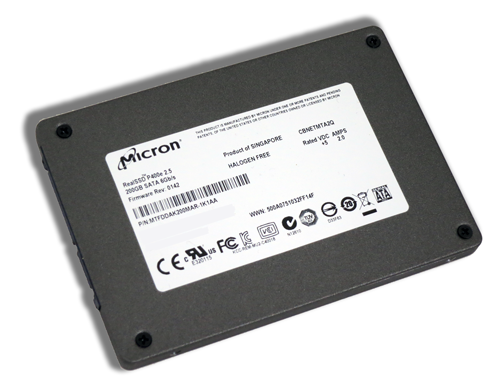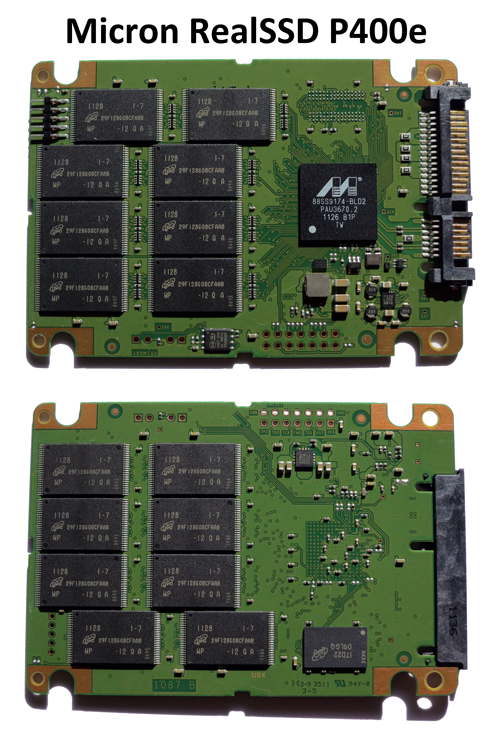Micron's RealSSD P400e: Affordable SSD Storage For The Enterprise?
Micron's Enterprise MLC-Based SSD
True enterprise-oriented SSDs are very expensive, and the SLC (single-level cell) NAND typically used in these solid-state drives is a major reason why. SLC NAND provides high performance data access and long-term endurance in demanding enterprise I/O environments, but, as we've seen time and again, is quite costly. In contrast, MLC (multi-level cell) NAND is far cheaper, but delivers slower write speeds, fewer program-erase cycles, and higher power consumption.
Given the significant premium on enterprise-class SSDs, there's an increasing emphasis on bridging the gap between the endurance, performance, and cost of SLC- and MLC-based drives. But is it even possible to achieve the I/O performance and long-term reliability heavy enterprise workloads require using consumer-grade MLC NAND?
We all recognize the potential of fast SSDs in demanding environments, after all. But magnetic storage is still most prevalent. Most IT professionals would welcome a transition to solid-state technology if it could be made less expensive, particularly in read-heavy applications where endurance isn't as pressing of a concern.
Micron's P400e is designed specifically to satisfy that space. A near twin of the consumer-oriented Crucial m4, Micron's P400e shares the same Marvell 9174 SATA 6Gb/s controller and 25 nm MLC NAND. In fact, the two SSDs are so similar that we found ourselves wondering: what, precisely, differentiates the P400e as an enterprise-grade SSD?
According to Micron, the P400e is equipped with firmware designed for read-heavy enterprise workloads, including 28% over-provisioning and data protection via memory path error correction. The company sees this drive deployed to address a wide range of business applications where SLC-based hardware might have been cost-prohibitive in the past. This partly explains why the P400e is manufactured to a 7 mm Z-height. It is possible to install the drive in the 9.5 mm standard form factor using a shim, making it easier to deploy in 1U/2U servers and more common hard drive racks.
| Micron RealSSD P400e Specifications | MTFDDAK050MAR-1J1AA | MTFDDAK100MAR-1J1AA | MTFDDAK200MAR-1J1AA | MTFDDAK400MAR-1J1AA |
|---|---|---|---|---|
| Raw NAND | 64 GB | 128 GB | 256 GB | 512 GB |
| User Capacity | 50 GB | 100 GB | 200 GB | 400 GB |
| Sequential Read | 350 MB/s | |||
| Sequential Write | 140 MB/s | |||
| 4 KB Random Read | 50 000 IOPS | |||
| 4 KB Random Write | 7000 IOPS | |||
| Power Consumption (Active) | 2.5 W for 50 GBUp to 5 W for 400 GB | |||
| Warranty | Three years |
Like the Crucial m4, Micron's RealSSD P400e is available in four capacities: 50, 100, 200, and 400 GB. However, the P400e's performance specifications fall a bit short of most SATA 6Gb/s-equipped SSDs we test (most notably the m4 that this drive looks a lot like), rated for 350 MB/s sequential reads, 140 MB/s sequential writes, 50 000 random read IOPS, and 7000 random write IOPS.
Acknowledging that reliability is more important than the performance of what we'll call an "entry-level" enterprise SSD, Micron deliberately alters its firmware to put more emphasis on trouble-free operation. The company hopes its approach may help prevent some of the firmware-related idiosyncrasies that plagued Crucial's m4 (and indeed, many other desktop-oriented drives that see three or four updates to correct show-stopping issues).
Get Tom's Hardware's best news and in-depth reviews, straight to your inbox.
Current page: Micron's Enterprise MLC-Based SSD
Next Page Write Endurance: Comparing MLC, eMLC, And SLC-
ethanolson I wonder if the poor performance is part of some mechanism that ensure higher reliability. Maybe lower read and write voltage increase endurance but take longer to populate the cell with the appropriate charge level.Reply
Just sayin'. -
mayankleoboy1 ReplyRelease Date: 04/11/2012
Firmware for the m4 SSD is being updated from version 0309 to 000F. The m4 is updatable to this new firmware starting from versions 0001, 0002, 0009, or 0309 in a single step. If updating from an early version directly to 000F, all interim improvements will also be include.
Changes between version 0309 and 000F include the following changes:
Improved compatibility with certain SAS expanders and peripheral RAID cards.
Improved throughput stability under extremely heavy workloads.
Improved data protection in the event of unexpected, asynchronous power loss.
This firmware update is recommended for all drives currently in the field if the end user is experiencing any of these symptoms.
m4 firmware updated to a newer version. -
jaquith Seems like the perfect SSD for a third-rate data center and not mine.Reply
If SoftLayer (f/k/a ThePlanet) wants to lower their standards then good for them, and perhaps they need yet another law suit or reevaluate their published up-time with some more asterix *. -
lutel The only thing that is important for me is full disk encryption in desktop environment. Unfortunately Intel completly forgot and since Q66 chipset there is no mainboard supporting FDE with SSDs. Q77 probably could support it, but there is no BIOS that has "hard disk / ATA password" option. Intel, wake up!!!Reply -
cknobman Not impressed at all. I dont really see one redeeming feature this drive has that would get it chosen over many other SSD's on the market.Reply -
Is it just me or do I notice that we really need to SAVE SLC from extinction? I mean, naturally high performance (compression or none), better temperature control, and higher longevity are the greatest features of SLC - good for the environment, pocketbooks, and peace of mind long term. Anyone?Reply

